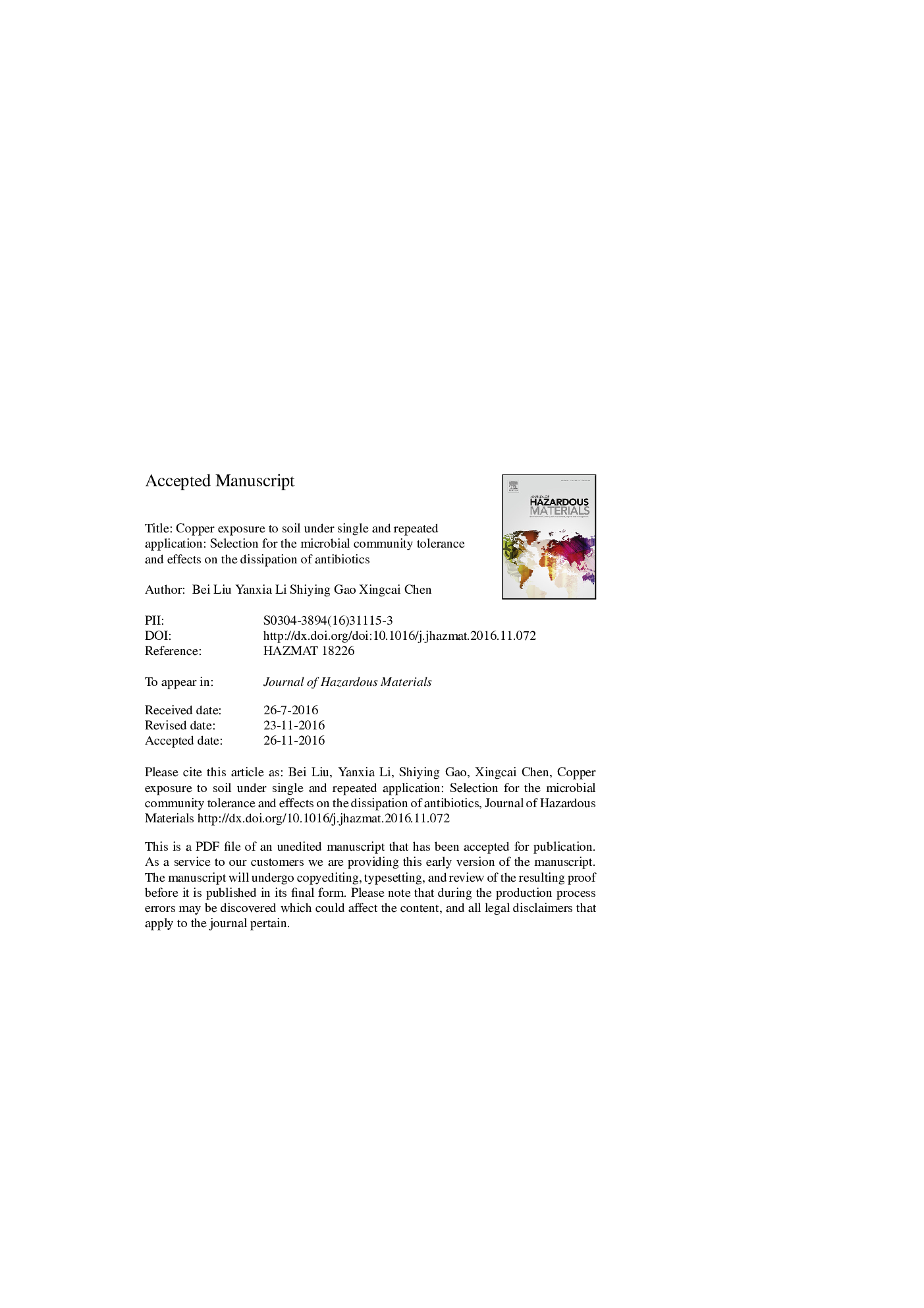| Article ID | Journal | Published Year | Pages | File Type |
|---|---|---|---|---|
| 4979726 | Journal of Hazardous Materials | 2017 | 33 Pages |
Abstract
In order to be more practical on evaluating the response of soil microbial communities to Cu contamination, we compared the microbial activity and selection for the microbial tolerance after a high level Cu exposure in single and corresponding repeated addition. It was shown that the activities of microorganisms in soils were largely inhibited by the exposure of Cu in a level of 32.9 mmol/kg. Specifically, single application displayed larger toxicity and longer-term effects on the microbial activity than the same amount of Cu that were repeatedly added by several times. Moreover, microbial tolerances to Cu and tylosin were observed in the soils contaminated by Cu. The repeated addition of Cu caused a higher tolerance to tylosin than that in a single addition, suggesting the repeated exposure has mitigated the toxicity and promote the selection for tolerant bacteria. Finally, it was observed that the organic pollutant (e.g. sulfadiazine) was degraded in the soils in an increasing order of sterilization < single-Cu addition < repeated-Cu addition < control, which was in agreement of microbial activities and emphasized the influence of Cu exposure on the soil function.
Related Topics
Physical Sciences and Engineering
Chemical Engineering
Chemical Health and Safety
Authors
Bei Liu, Yanxia Li, Shiying Gao, Xingcai Chen,
